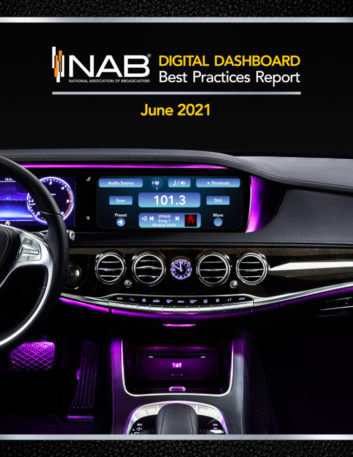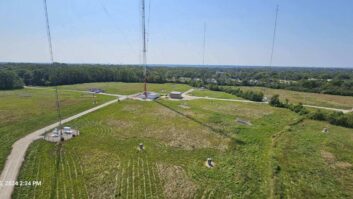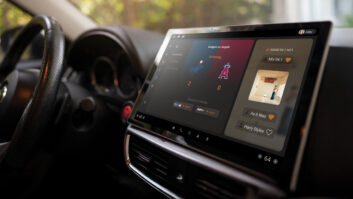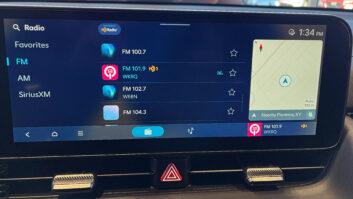 David H. Layer is vice president, advanced engineering at the National Association of Broadcasters. Radio World spoke with him recently ahead of the anticipated Broadcast Engineering & IT Conference at the NAB Show. The convention has since been cancelled but the activities discussed here continue. Here are relevant portions of our conversation.
David H. Layer is vice president, advanced engineering at the National Association of Broadcasters. Radio World spoke with him recently ahead of the anticipated Broadcast Engineering & IT Conference at the NAB Show. The convention has since been cancelled but the activities discussed here continue. Here are relevant portions of our conversation.
Radio World: David, there is a Radio Committee of the North American Broadcasters Association, in which NAB is involved. What role is NABA playing right now in regards to the auto infotainment landscape?
David Layer: NABA serves as a bridge between Canada, the U.S. and Mexico regarding radio and TV broadcasting technical and regulatory issues. NABA’s Radio Committee has two active projects, one involving development of a NABA In-Car User Experience (ICUE) guideline that is based upon — and complements — an ICUE document developed by WorldDAB, the other on hybrid radio and metadata.
This second project involves developing resources and guidance for North American broadcasters on how to effectively support hybrid radio platforms and regarding the importance of having good textual and visual metadata which will make radio look as good as it sounds.
RW: Hybrid radio has occupied a lot of your attention recently, and we’ve written a good deal about the topic in Radio World. What’s your key message for broadcasters regarding hybrid radio?
Layer: It’s a straightforward message: for each station to provide good metadata support for their over-the-air and streaming audio products.
At NAB, we’ve been reaching out to broadcasters with this message and backing it up with information on specific metadata suggestions that are relevant to different types of stations.
For example, all analog FM stations and AM and FM HD Radio stations should be registered with RadioDNS, a nonprofit organization that develops and supports open technical standards for hybrid radio — unfortunately, analog AM stations are not at present supported since they have no data-carrying capability.
NAB recently updated and reissued the NAB Digital Dashboard Best Practices Report, which provides lots of detail and recommendations for broadcasters on how to implement and improve their metadata operations. I would encourage your readers to download and read this report.
RW: U.S. broadcasters seem to be cautious about building out the infrastructure to support hybrid radio. Why do you think that is?
Layer: I believe there are many broadcasters who have actually been bullish on hybrid radio and eager to provide top-notch support, encompassing both medium and large radio groups. I do not sense a lack of interest among broadcasters but I definitely think that there are resource issues contributing to a slower-than-desired rollout of support. And not surprisingly, these resource issues have been exacerbated by the pandemic.

RW: What specific make and models of cars now have hybrid radio available in North America, and when should we expect more?
Layer: I know that Audi, using their MultiMedia Interface or MMI, and Mercedes, using DTS AutoStage, are shipping cars with hybrid radio receivers to North America, but I do not know the model breakdown. Also, there are BMW cars in North America that use RadioDNS for station information and logos but do not support streaming audio service following.
I expect more brands will be doing hybrid radio soon but I expect that the “chip shortage” we’ve been reading about, where the computer chips needed by automobiles are in short supply, will lengthen this hybrid radio rollout.
RW: Something NAB PILOT has been involved in, is testing the reception of all-digital AM radio in electric vehicles. Why is this important?
Layer: I’ve been privileged to work with a fine group of Xperi employees on an all-digital AM in electric vehicles project, most recently with Pooja Nair, an Xperi communications engineer who is my co-author for a paper on this subject in this year’s NAB Broadcast Engineering and Information Technology Conference Proceedings.
Also, a special thanks to Dave Kolesar of Hubbard Broadcasting for making all-digital AM station WWFD at 820 kHz in Frederick, Md., available for electric vehicle-related testing.
One of the topics covered in our BEITC paper is a comparison of the coverage of all-digital AM radio using both internal combustion engine or “ICE” vehicles and electric vehicles, or EVs. While only a limited amount of all-digital AM testing has been done in electric vehicles to date, the clear indication is that all-digital AM works well in electric vehicles and is much more resistant to the electrical noise generated by the motors than is analog AM.
This is important information for automakers as they make decisions affecting radio technology in electric vehicles.
RW: What else should engineers know about these topics and the work in radio that NAB PILOT is doing?
Layer: An interesting recent development is the installation and upgrading of the PILOT radio test bed into the Technology Lab at NAB’s new headquarters building at 1 M Street SE in Washington, D.C.
This test bed, built for PILOT by Cavell, Mertz & Associates, was housed at their office in Manassas, Va., prior to this move, and while in Manassas was used for a number of important projects including co-channel interference testing for all-digital AM radio and testing of FM-band HD Radio mode MP11 which adds an additional 25 kbps of throughput to digital FM radio signals.
Bringing this facility to the new NAB building will provide us with new opportunities to use the test bed for technology demonstrations to NAB members and others, and will allow NAB and PILOT to continue exploring radio technology and assisting in its development.







